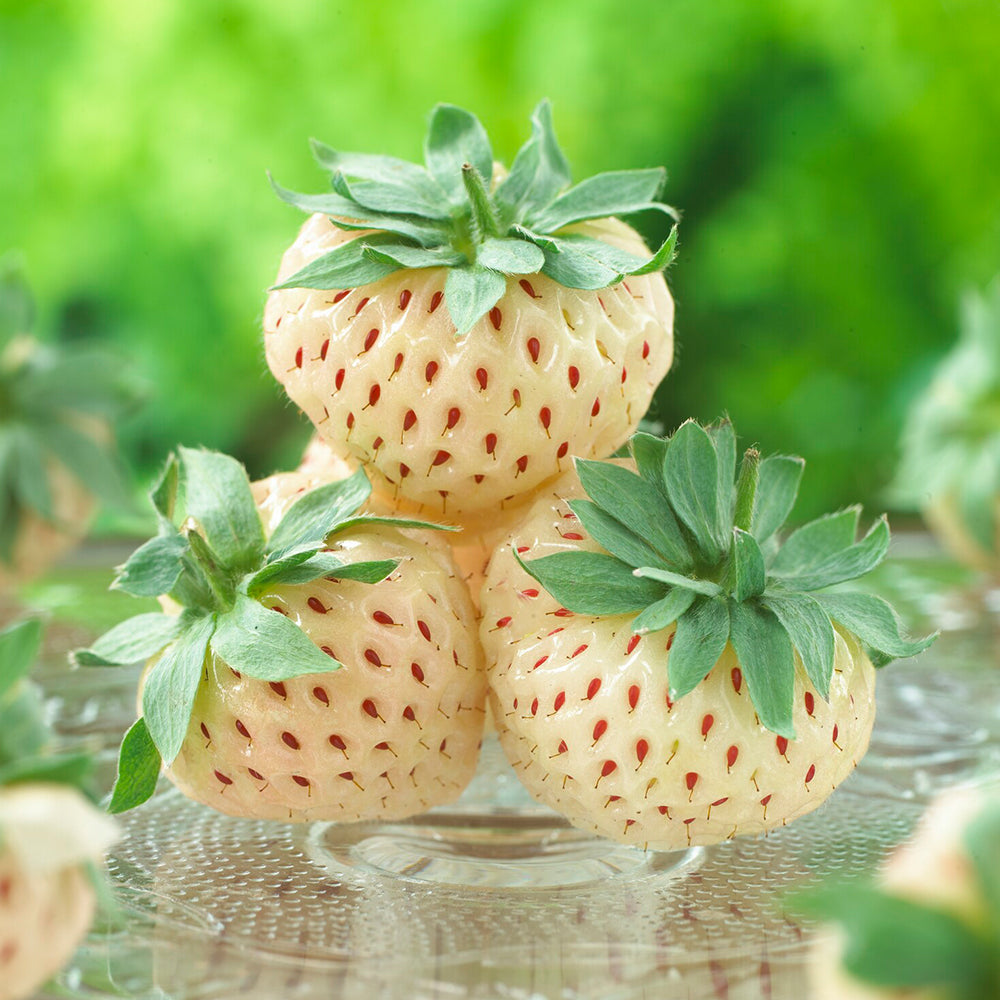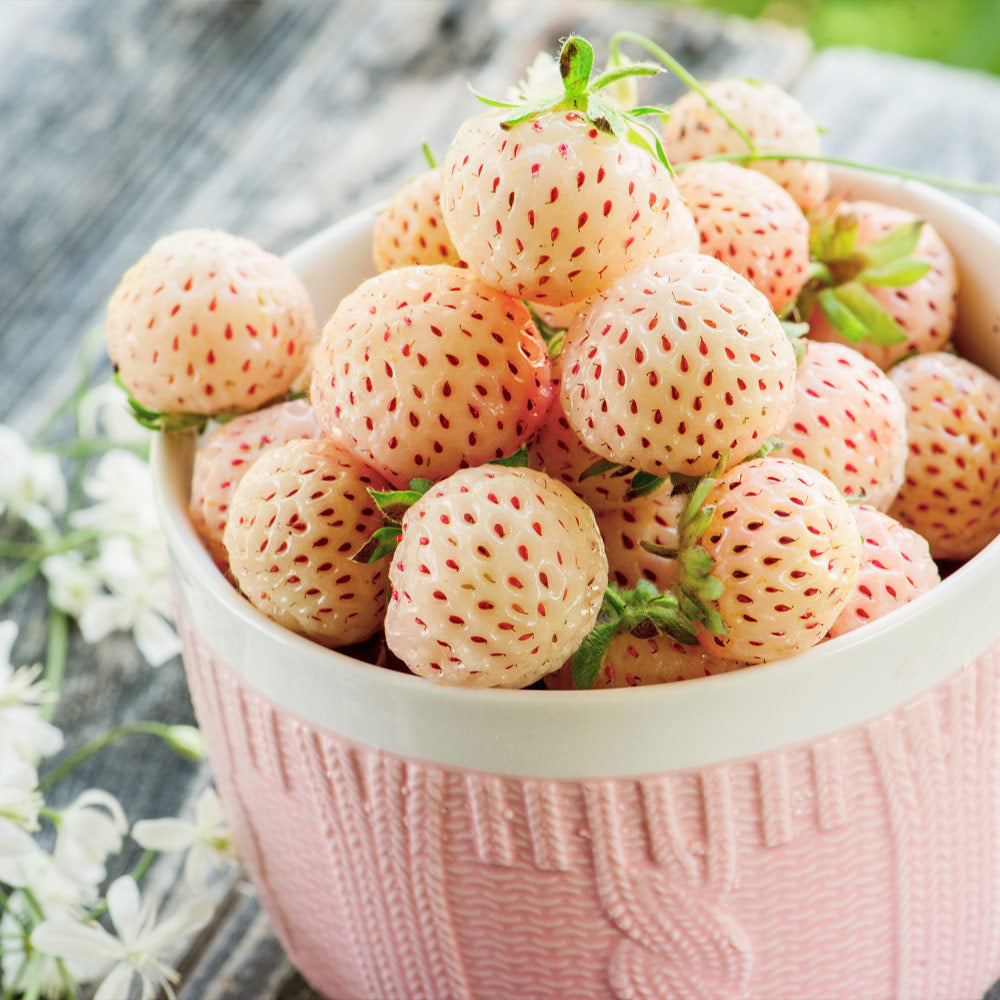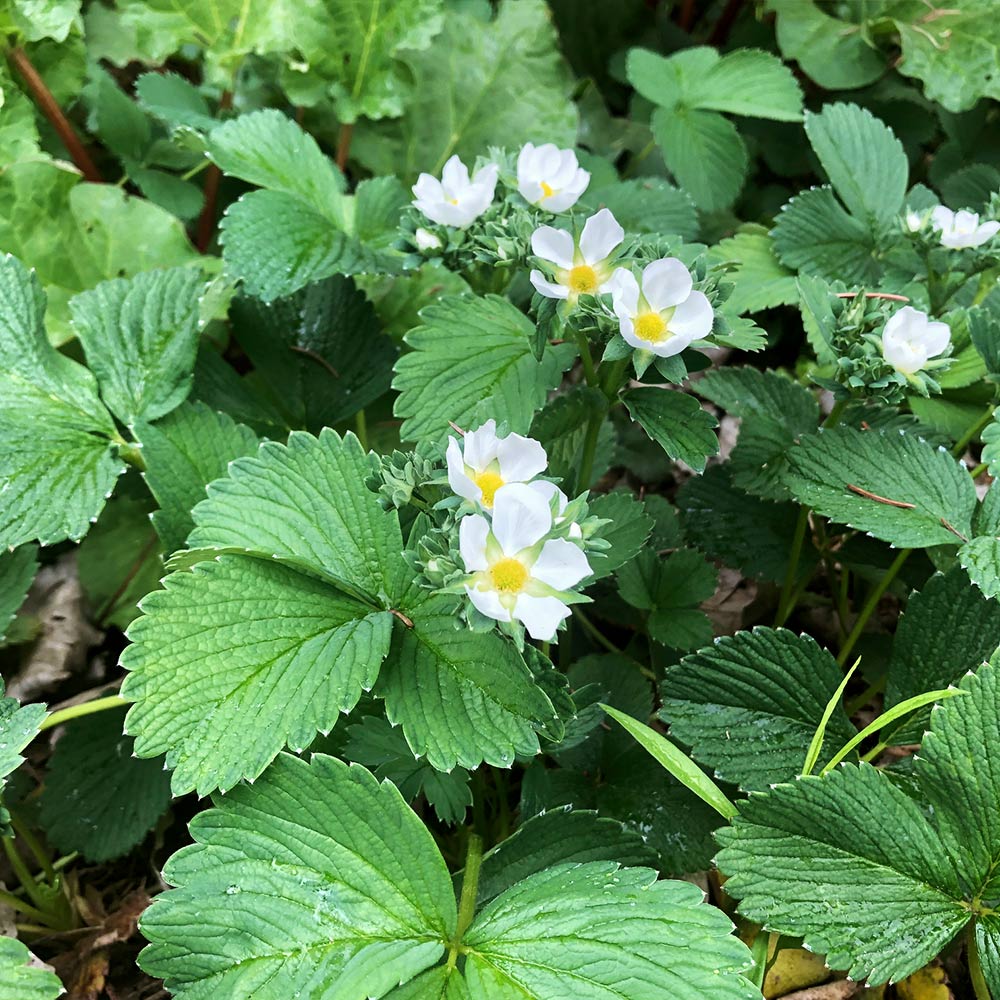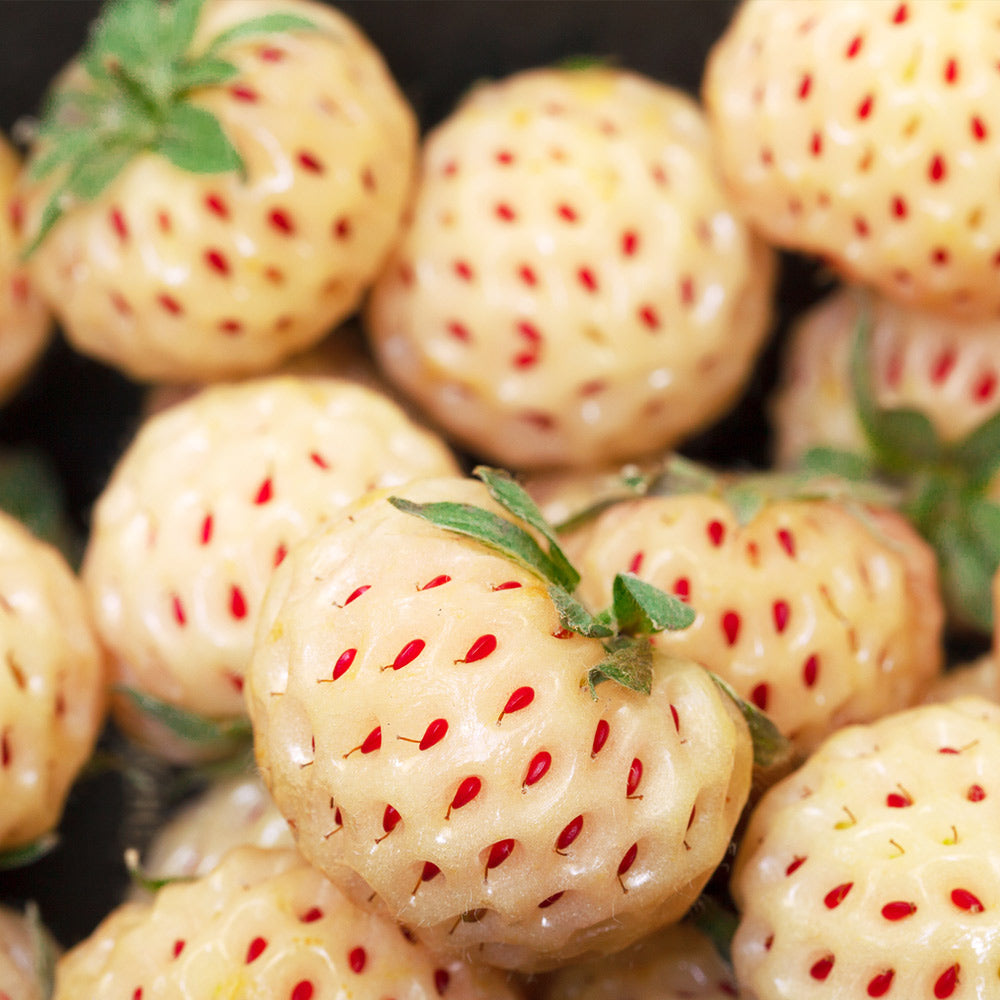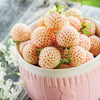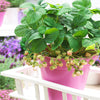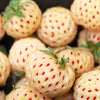* Images shown are of mature plants

Have questions? Talk with our Plant Experts (800) 973-8959
Great Tasting Strawberry that's almost Invisible to Birds & Pests
White Pineberry Strawberry plants are the fastest growing strawberry trend. Their unique look with white skin and red seeds is highly sought after. Not only do they have an amazing look, but they're extremely flavorful as well.
These hybrids have a sweet, but tart flavor that's similar to the way a pineapple tastes. They also have a firm texture, with flesh that's juicy and soft on the inside, like a strawberry. These two characteristics combined give this popular fruit its 'pineberry' name.
Birds and pets are attracted to berries with bright red skin. Because Pineberries have white skin they are often invisible to prey, meaning you won't have to worry about critters stealing yor fruit.
Pineberries are exploding in the culinary scene. Pies, jams, and recipes have never been better thanks to these strawberry hybrids. You don't have to bake with them to enjoy them. Simply pick a few for a fresh healthy snack. Their delightful scent will make your mouth water before biting into them.
Luckily these berries are easy to grow both in the ground, and in containers. Plant a few in your garden, or keep them in containers on your deck or patio in order to supply yourself with tons of delicious Pineberries.
You'll amaze your friends once you start growing these berries that look like strawberries, but have white skin, instead of bright red. Most people have never seen them before, and will keep coming back to your garden to take a peek at them.
Pineberries are fun to grow. They produce the small white flowers before growing large unique berries. They're cold hardy, and can be grown in Northern states. Even if your area gets too cold for this plant, place it in a container and bring it indoors once it starts to get cold.
Pineberries aren't widely available, and they sell out fast. We recommend getting yours today, before they're gone.
Planting & Care
The Wonderful Pineberry (Fragaria) is a type of strawberry known for its unique white skin and red seeds making the fruit more invisible to birds and pets that are typically attracted to red strawberries. Similar to a strawberry, they have the same planting and caring needs, but the hints of pineapple taste gives this plant it’s name. Not to worry though, these plants are not genetically modified in any way. These plants are described as more of a ground covering reaching heights of only 8-12 inches and width of 10-18 inches. They are good for growing zones 5-8 but can also be potted and brought indoors during the winter. The Wonderful Pineberry is described as “ever bearing” meaning they continue to bear fruit throughout the growing season, although they will slow down if temperatures become too hot during the summer. Eat these berries right off the vine or enjoy them in your favorite pie or jam!
Seasonal Information: Spring and fall are the best time to plant. If planting in fall, be sure to allow several weeks before your ground freezes. When planting in spring, make sure your soil is dry, able to be worked and that you are clear from any potential freezes. It’s also recommended to plant strawberries on a cloudy or overcast day or wait until late in the afternoon.
Location: In order for your plants to produce a large yield of fruit, select a location where they’ll receive full sunlight (6-8 hours a day). Avoid planting near any trees or plants that will not only compete for moisture, but can also cast a shadow over your plants and rob them of the much needed sunlight they require. They prefer a sandy, loamy soil with a pH between 5 and 7. Be sure your soil drains well, if roots are left standing in water due to poor drainage, issues with root rot will likely occur. A raised bed may be required to facilitate better drainage.
Planting Instructions:
1) Dig a hole as deep as the roots and twice as wide.
2) In the bottom of the hole, create a mound of soil so that the top of the mound is level with the surrounding soil.
3) Place the plant on top of the mound and spread the roots down the sides. Ensure that the crown of the plant is at soil level.
4) Loosen the soil around the plant so that runners are able to successfully take root.
5) Backfill the hole with the soil, lightly tamping down as you fill to avoid air pockets.
6) Avoid firming the soil at this point and instead, water the area immediately to settle the soil.
7) Mulch around your pineberry plants with shredded leaves, pine needles, compost, or straw. Mulch will help to keep the soil around the roots cooler which will help your plants produce better.
Watering: Regular watering is needed to ensure the best success at growing pineberries. Provide your plants with at least one inch of water and up to two inches during the growing season, especially when the temperatures start to rise. Be sure your soil drains well to reduce any risk of root rot. Yellowing and drooping leaves can be a sign of overwatering while dry and browning leaves can be a sign of underwatering.
Fertilization: Apply a balanced 10-10-10 fertilizer 4-6 weeks after planting and then again in August. Keep in mind that too much fertilizer can cause excessive leaf growth and not enough flowers. To grow organic pineberries, apply blood meal to increase nitrogen and bone meal to increase phosphates. Organic fertilizers should be applied once a month from June to September.
Pests and Diseases: Birds and slugs can be a common problem when growing pineberries, although the white skin usually makes it more difficult for them to see. If you do have issues, cover your plants with bird netting and copper ribbon will help keep slugs away.
Shipping Details
Estimated Shipping Time: Most orders ship immediately. As noted on the website, some items are seasonal, and may only ship in spring or fall. Once your order is shipped, you'll receive an email with a tracking number.
| Amount of Order | Shipping Charge |
|---|---|
| Less than $49 | $19.95 |
| $49 + | FREE SHIPPING! |
Product Details
| Mature Height: | 8-12 in. |
| Mature Width: | 10-18 in. |
| Sunlight: | Full-Partial |
| Growth Rate: | Fast Growing |
| Harvest Time: | April - May |
| Botanical Name: | Fragaria |
| Does Not Ship To: | AK, AZ, HI, IN |
| Grows Well In Zones: | 5-8 outdoors |
| Your Growing Zone: | # |

